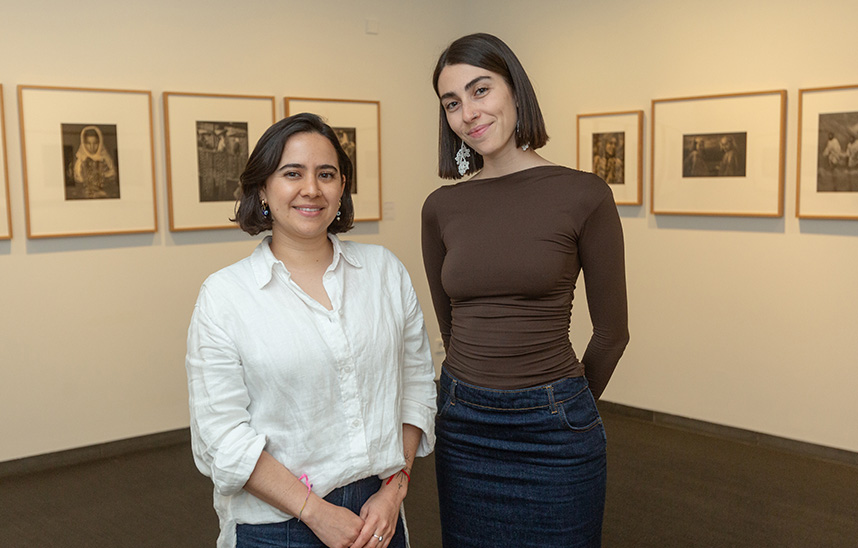MUN renovates the Ortiz Echagüe space
The selection presents the photographer as a traveler. The works also exemplify the technical procedure followed by the artist.

FotoManuelCastells/Andrea Ludeña and Agustina Marani, curators of the exhibition.
The exhibition space Ortiz Echagüe del Museo Universidad de Navarra is renewed by two curators, Agustina Marani and Andrea Ludeña, former students of the Master in Curatorial Studies. The selection of 28 works tells us about the photographer as a traveler who portrays places and anonymous people he dignifies with his camera. In addition, it is completed with a projection on the life and photographic procedure used by Ortiz Echagüe.
The result is a window to traditional worlds, and a way to peek into the soul of human beings through the eyes of the people photographed, with images taken both in North Africa(El Siroco del Sahara, 1965) and in Spain: Cerros de Calatayud 3 ( 1935) from the series "Castillos y Alcázares"; Molina de Aragón (1935), from the series "Pueblos y paisajes"; the portrait of the Monk of Guadalupe (n. d.), from the series "Pueblos y paisajes"; or the Chica de Ibiza (1930), from the series "Tipos y trajes".f.), from the series "Mystical Spain"; or the Girl from Ibiza (1930), from the series "Types and Costumes". Ortiz Echagüe captures a world that seems to be on the verge of disappearing: popular traditions that may never happen again, religious festivities, typical costumes, landscapes, castles, fortresses, etc.
The exhibition also offers representative works of the technical procedure and intervention followed by the photographer: Basque rowing boat (1931) exemplifies the use of direct charcoal on Fresson paper, while Female Portrait ( 1906) or Rifian Boy ( 1910) show the use of scratches as a method to intervene the image.
The photographic work of José Ortiz Echagüe, bequeathed in 1981 to the University of Navarra, is the origin of its Photographic Fund, and is now part of the MUN. Ortiz Echagüe (Guadalajara, 1886 - Madrid, 1980) was a Spanish military engineer, pilot and photographer. A very relevant figure in the history of photography in Spain, he has been internationally recognized as one of the best photographers. His dedication to photography was purely as an amateur. In addition, as a businessman he founded two large companies: Construcciones Aeronáuticas S.A. (C.A.S.A.) and the first Spanish automobile manufacturing industry, SEAT.